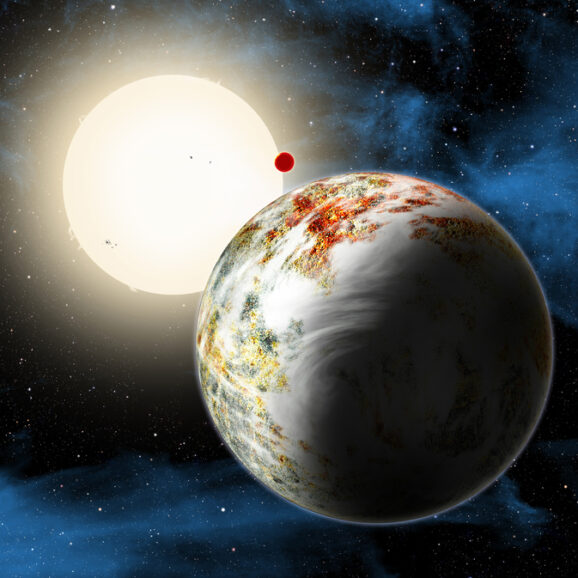Massive Mega-Earth Baffles Scientists
This article is more than 2 years old
 I imagine that scientists spend a lot of time scratching their heads, stymied by some mystery or unexplained phenomenon. Of these scientists, I figure astronomers are particularly well acquainted with head scratching, as some deeply weird stuff goes on deep in the cosmos. In fact, astronomers just discovered one such unexplainable finding: a rocky planet twice as big as Earth and 17 times as large.
I imagine that scientists spend a lot of time scratching their heads, stymied by some mystery or unexplained phenomenon. Of these scientists, I figure astronomers are particularly well acquainted with head scratching, as some deeply weird stuff goes on deep in the cosmos. In fact, astronomers just discovered one such unexplainable finding: a rocky planet twice as big as Earth and 17 times as large.
The Kepler 10 system contains two rocky planets, that we know of. One of them, Kepler-10c, has always been known to be bigger than Earth—2.3 times, to be precise. But astronomers at the Harvard-Smithsonian Center for Astrophysics (CFA) were only recently able to calculate the planet’s mass. The original data collected by the good ol’ Kepler telescope indicated the planet’s size, but not its weight or composition, so astronomers used additional data from the High Accuracy Radial velocity Planet Searcher (HARPS-North) instrument on the Canary Island’s Telescopio Nazionale Galileo. They were surprised by the result.
“Just when you think you’ve got it all figured out, nature gives you a huge surprise – in this case, literally,” said Kepler mission scientist Natalie Batalha. “Isn’t science marvelous?” The weight of Kepler-10c is so surprising because astronomers thought worlds like this didn’t, and couldn’t, exist. A planet with this much mass would develop a layer of hydrogen gas when forming and, so they thought, would eventually become a gas giant, such as Jupiter, rather than a rocky planet.
Kepler-10c orbits its host star, in the Draco constellation roughly 560 light years from Earth, every 45 days—almost twice as fast as Mercury orbits out sun. The planet is close to that star and far too hot to harbor life, at least, not any kind of life we know about. While some planets are deemed “super-Earths,” Kepler-10c is the first to bear the title “mega-Earth,” or as CFA research Dimitar Sasselov likes to call it, the “Godzilla of Earths.”
Additional data also suggests that Kepler-10c is not unique, and scientists expect to find more like it as the planet hunting telescopes and satellites continue to collect information. The Kepler-10 system is roughly 11 billion years old, and the big bang occurred just over 14 billion years ago. When the universe was only 3 billion years old, it contained hydrogen and helium—not iron, silicon, or the elements scattered later by supernovae that form rocky planets.
Scientists thought it would take a lot longer for planets such as Kepler-10c to form, but now know that rocky planets were forming much earlier than previously thought. And, as Sasselov says, “if you can make rocks, you can make life.”












